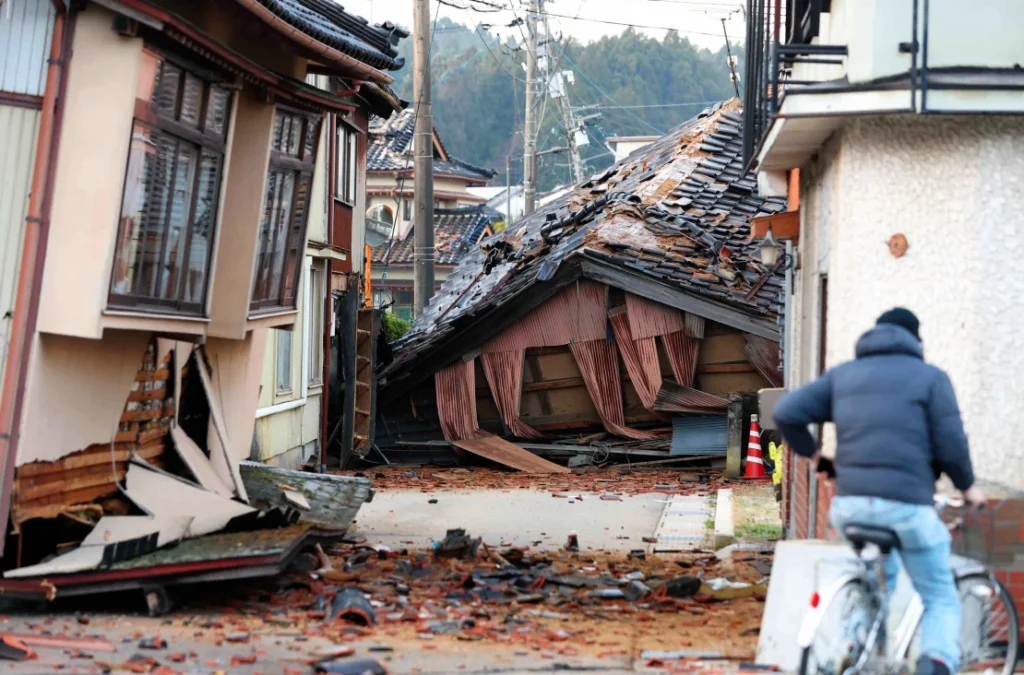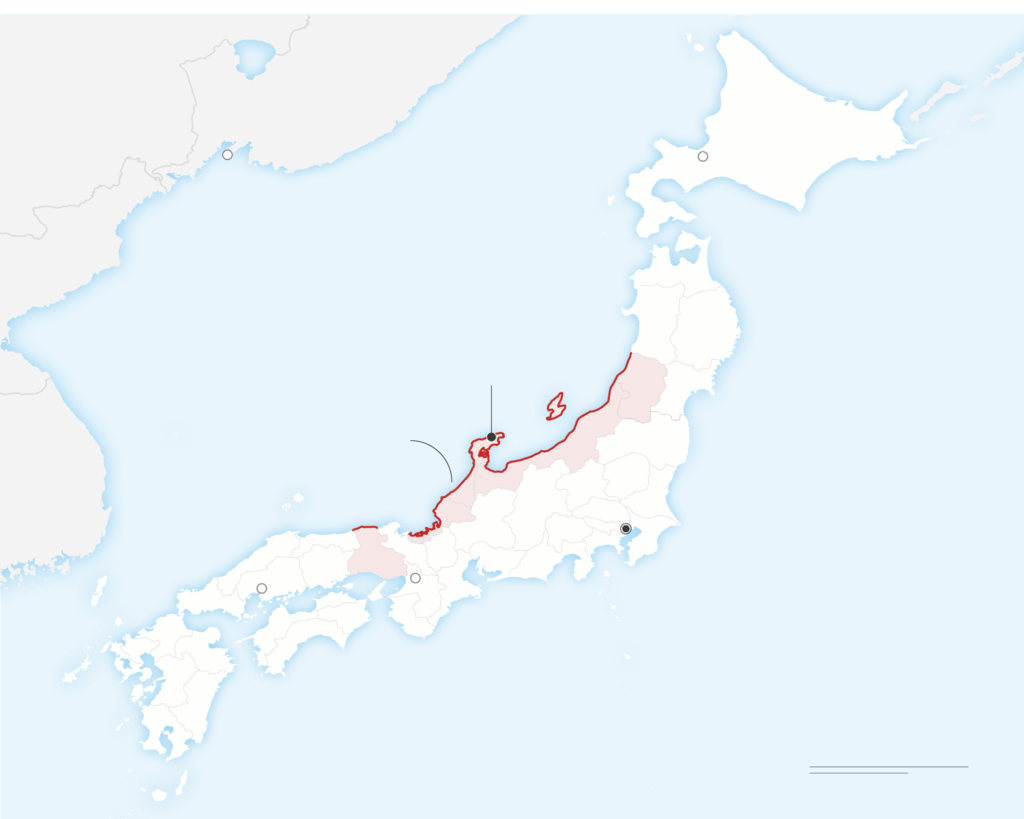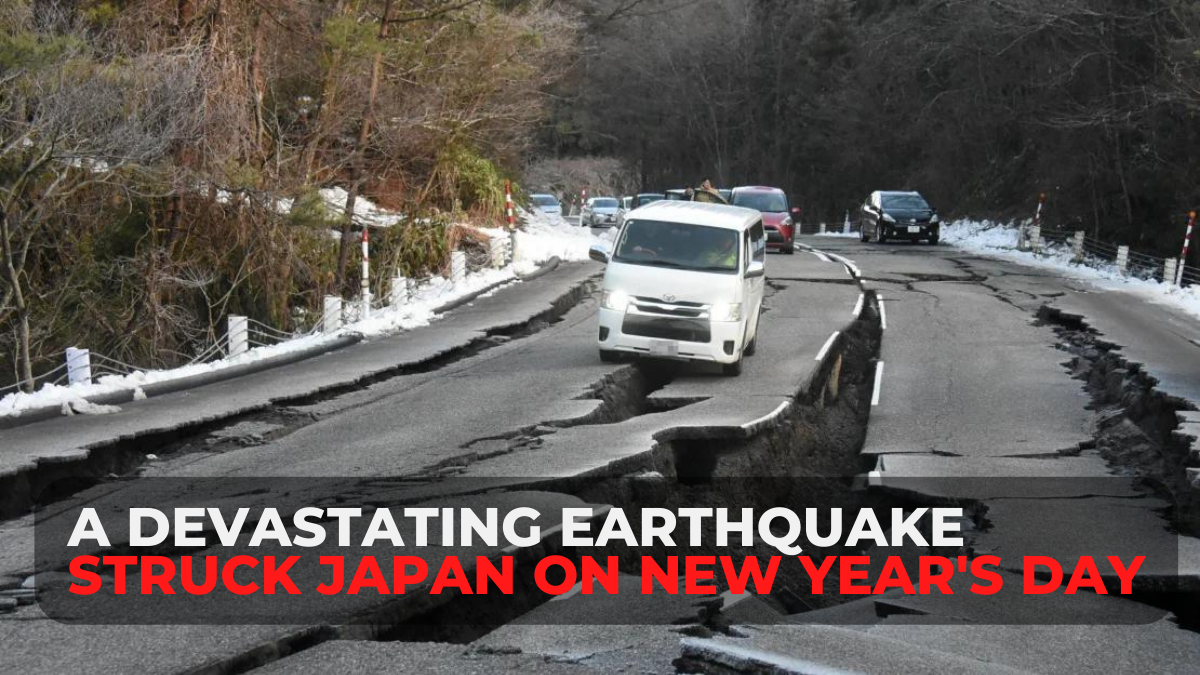A devastating earthquake struck Japan on New Year’s Day, resulting in a tragic loss of at least 48 lives. The aftermath of this powerful seismic event left rescue teams grappling to access isolated areas where buildings were crumbled, roads were destroyed, and tens of thousands of homes were left without power.

The earthquake, registering a preliminary magnitude of 7.6, hit on Monday afternoon, prompting residents in coastal regions to flee to higher ground as tsunami waves battered Japan’s western coast. The waves wreaked havoc, sweeping away cars and houses into the water.
Efforts to aid those affected by the earthquake involved a 3,000-strong rescue team comprising army personnel, firefighters, and police officers dispatched to the quake site in Ishikawa prefecture’s Noto peninsula. Prime Minister Fumio Kishida, donning the standard blue outfit worn by officials during disaster relief operations, emphasized the urgency of the search and rescue operations during an emergency meeting on Tuesday.
Accessing the northern tip of the Noto peninsula, where extensive damage had been identified through helicopter surveys, posed significant challenges for rescuers. Approximately 120 individuals were reported awaiting rescue, with many facing difficulties due to the destruction of buildings and infrastructure.
The earthquake’s impact led to the suspension of numerous rail services and flights in the affected areas. Noto’s airport, housing over 500 stranded individuals, closed due to runway and terminal damage caused by the seismic activity.
Mayor Masuhiro Izumiya of Suzu, a coastal town near the epicenter, estimated that up to 1,000 houses might have been demolished, describing the situation as catastrophic.
Official reports confirmed 48 fatalities in Ishikawa prefecture, making this earthquake the deadliest in Japan since 2016 when a 7.3 magnitude quake struck Kumamoto, claiming over 220 lives.
Survivors recounted harrowing experiences, with one resident, Shoichi Kobayashi from Wajima, describing the overwhelming power of the quake. His family, unable to return to their severely damaged home, sought shelter in their car amidst the continuous aftershocks.
The Japan Meteorological Agency detected around 200 tremors following the initial quake, cautioning the possibility of more strong aftershocks in the days ahead.

In Nanao city, resident Fujiko Ueno recalled the terrifying moment when her house collapsed during a New Year’s celebration, miraculously leaving everyone unharmed.
Several world leaders, including President Joe Biden, extended condolences and offered assistance to Japan in this time of crisis.
The Japanese government ordered the evacuation of approximately 100,000 people to designated emergency shelters, with nearly half returning home after authorities lifted tsunami warnings. However, around 33,000 households remained without power, while nearly 20,000 homes faced water shortages in Ishikawa prefecture.
The earthquake’s impact also disrupted official engagements, leading to the cancellation of Emperor Naruhito and Empress Masako’s New Year appearance, along with Prime Minister Kishida’s visit to the Ise Shrine.
Amidst the rescue operations, concerns arose about Japan’s nuclear facilities. The seismic event occurred as Japan lifted operational restrictions on the Kashiwazaki-Kariwa nuclear plant, which had been offline since the 2011 Fukushima disaster. Fortunately, no irregularities were reported at nuclear plants along the Sea of Japan, although power outages and oil leaks were recorded at Hokuriku Electric’s Shika plant, which has been inactive since 2011. Authorities assured no radiation leakage had occurred.
In the business sector, Toshiba’s local subsidiary halted semiconductor production in Ishikawa to assess the quake’s impact, while chip equipment maker Kokusai Electric inspected its Toyama factory for damages before planning to resume operations.
The earthquake’s destructive force and ensuing challenges have not only taken lives but also severely disrupted various aspects of life and infrastructure in the affected regions, necessitating immediate and sustained efforts towards recovery and reconstruction.
